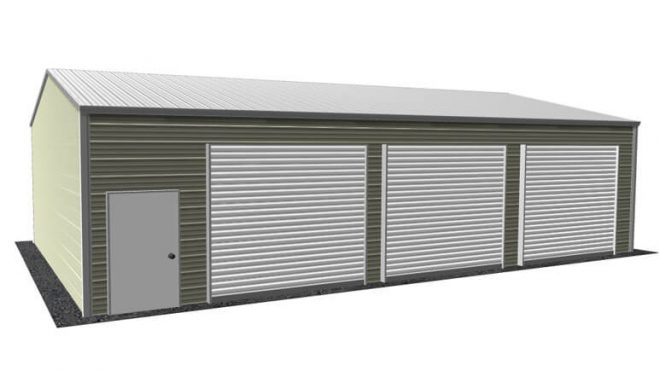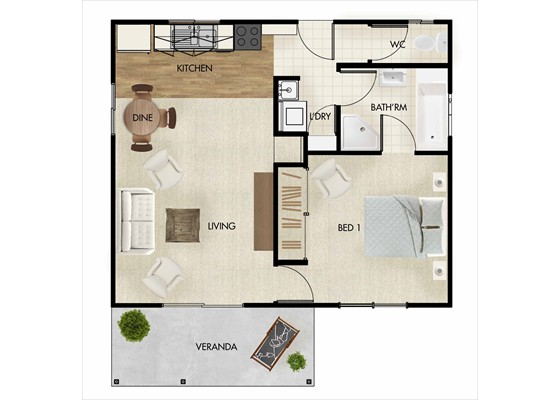
A garage can be dangerous. It's not a secure place to live and there are many risks associated with living in it. Pests are one the most serious risks. For many reasons, pests love garages. Garages are dark, quiet and shady which attract rodents and insects. Garages can be accessed easily. They can easily access the building from their cars.
You and your pet can be very dangerous with some of these animals. Muskrats, for example, can be aggressive and cause problems with seepage. If they don't go away, they can spread rabies or other diseases to your vegetation. It is important to keep hazardous chemicals out the garage.
Garages that are not properly insulated pose another risk. If the temperature drops, it could be a problem. To prevent this, keep your floors warm. A good solution is to install garage heaters. Alternately, you could create a second-floor apartment.
Many people choose to live in garages for various reasons. It is often because it is convenient. Garages are usually very easy to access. This allows people to easily move in and out of the garage at will. This area can also serve as storage.

The garage is a great place to hide from the elements. However, there are some dangers. A building permit is required if the garage is to be used as an apartment. There are also zoning laws that can make the conversion difficult.
Many communities have restrictions about the types of living spaces you can build. If you are planning to convert a garage into a living space, you should contact your local alderman to discuss the regulations.
You will also need to consult with your agent before you make a major change to your home. You should also keep your taxes, and insurance premiums, in mind. Major changes can affect your risk profile and make your house more expensive to insure. You can also reduce your house's value by adding an additional bedroom.
Although garages are great shelter from the rain, they can also be breeding grounds for pests. Depending on your area, you could have a variety of different bugs, including spiders, raccoons, ants, and rats.
Consider whether your garage can be converted into a living space. If you suspect that a neighbor's garage may be infested, you should file an official complaint with the local housing authority. You will find your name on the complaint form.

It has been reported that people sleep in cars while using kerosene heaters to heat their homes. However, you should always be careful when using these appliances. Your vehicle could also be at risk for being broken into.
Safety is the most important consideration. If you have kids, you should make sure that they are not exposed to hazardous chemicals. Also, make sure they are away from any boxes, wires, or other items.
FAQ
Which order should you renovate the house?
The roof. The plumbing is the second. Third, the wiring. Fourth, the walls. Fifth, the floors. Sixth, the windows. Seventh, the doors. Eighth, the kitchen. Ninth are the bathrooms. Tenth, the garage.
After all the above, you are now ready for the attic.
You might consider hiring someone who is skilled in renovating your house. Renovation of your house requires patience, effort, time and patience. And it will take money too. If you don't have the time or money to do all the work, why not hire someone else?
Renovations aren't cheap, but they can save you tons of money in the long run. It's also a way to make your life more pleasant.
How much does it cost for a shower to be tiled?
Do it yourself if possible. A complete bathroom remodel is an investment. But when considering the long-term value of having a beautiful space for years to come, it makes sense to invest in quality materials and fixtures.
The right tiles will make a big difference in the way your room feels and looks. This quick guide will help with your selection of the best tiles, no matter if you're looking for small or big projects.
First, choose the flooring type you wish to use. Common choices include ceramics and porcelain as well as stone and natural wooden. Select a style, such as classic subway tiles or geometric patterns. Choose a color combination.
If you are remodeling a large bathroom, you'll likely need to match the tile with the rest. You may choose white subway tile for your bathroom and kitchen area, but select darker colors for other rooms.
Next, decide the scope of the project. Is it time to update a small powder room? Or would you rather add a walk-in closet to your master suite?
Once you have decided on the scope of the project, visit your local store to view samples. This will allow you to get a feel for how the product is assembled.
Shop online for amazing deals on ceramic and porcelain tiles Many sellers offer discounts and free shipping for bulk orders.
What are the included features in a full remodel of your kitchen?
A full kitchen remodels more than just a new sink and faucet. You will also need cabinets, countertops and appliances as well as lighting fixtures, flooring, plumbing fixtures, and other items.
A complete kitchen remodel allows homeowners the opportunity to upgrade their kitchens without any major construction. This means that no demolition is required, making the project easier for both the homeowner and the contractor.
Kitchen renovations include various services, including electrical, plumbing, HVAC, carpentry, painting, and drywall installation. Depending on the scope of the project, multiple contractors might be needed to remodel a kitchen.
It is best to work with professionals who have experience in kitchen remodeling. Small issues can lead to delays when there are many moving parts involved in a kitchen remodel. You should plan ahead and prepare a backup plan for any unexpected situations if you decide to DIY.
Why should I remodel my house rather than buy a new one?
Although houses are getting cheaper each year, you still have to pay the same amount for the same square footage. Although you get more bang, the extra square footage can be expensive.
A house that isn't in constant maintenance costs less.
You can save thousands by remodeling your existing home rather than buying a completely new one.
Remodeling your home can make it more comfortable and suit your needs. You can make your house more comfortable for yourself and your family.
How much would it cost to gut a home vs. how much it cost to build a new one?
The process of gutting a house involves removing all contents inside the building. This includes walls, floors and ceilings, plumbing, electrical wiring and appliances. It's often necessary when you're moving to a new house and want to make changes before you move in. It is often very costly to gut a home because of all the work involved. The average cost to gut home ranges from $10,000 to $20,000, depending on your job.
Building a home is where a builder builds a house frame by frame, then adds walls, flooring, roofing, windows, doors, cabinets, countertops, bathrooms, etc. This is done usually after purchasing lots. Building a home usually costs less than gutting and can cost between $15,000 and $30,000.
It comes down to your needs and what you are looking to do with the space. You'll need to spend more if you plan to gut your home. If you're building your home, however, you don't have to tear everything down and start over. You can build it as you wish, instead of waiting to have someone else tear it apart.
What is the cost of remodeling a kitchen or bathroom?
Remodeling a bathroom and kitchen can be costly. It is worth considering the amount of money you spend on your energy bills each monthly.
An inexpensive upgrade can save you thousands of dollars every year. A few simple changes, such as adding insulation to walls and ceilings, can reduce heating and cooling costs by up to 30 percent. Even a modest addition can improve comfort and increase resale value.
Remember to choose durable and easy-to maintain products when you are planning your renovations. Materials such as porcelain tile, stainless steel appliances, and solid wood flooring last longer and require fewer repairs than vinyl or laminate countertops.
You may also find that replacing old fixtures with newer models can help cut utility expenses. Low-flow faucets and showerheads can reduce water consumption by as much as 50%. Replacing inefficient lighting with compact fluorescent bulbs can cut electricity consumption by up to 75 percent.
Statistics
- 55%Universal average cost: $38,813Additional home value: $22,475Return on investment: 58%Mid-range average cost: $24,424Additional home value: $14,671Return on investment: (rocketmortgage.com)
- According to a survey of renovations in the top 50 U.S. metro cities by Houzz, people spend $15,000 on average per renovation project. (rocketmortgage.com)
- 57%Low-end average cost: $26,214Additional home value: $18,927Return on investment: (rocketmortgage.com)
- Attic or basement 10 – 15% (rocketmortgage.com)
- Following the effects of COVID-19, homeowners spent 48% less on their renovation costs than before the pandemic 1 2 (rocketmortgage.com)
External Links
How To
How do you plan your bathroom budget?
The most important thing about any remodeling project is to make sure you can afford it. You can't expect to be able pay for it later, so make sure you have enough money.
Bathroom renovations require careful planning and a thorough understanding of the associated costs. It is not cheap to remodel a bathroom.
Labor costs are one of your biggest expenses. Costs for labor depend on the size of your job and whether or not you hire a professional. Because of their expertise and experience, professionals usually charge more than DIYers for an hour.
Materials are another significant expense. Prices per square foot can vary depending upon the type of material.
The cost of energy is also an important factor. This includes both electricity and gas bills. Peak demand periods are when energy costs can rise.
Also, consider how much time it will take to complete the project. Bathroom renovations can take a lot time and patience. Some projects can take weeks, while others can take many months.
These three main categories are not the only ones that matter. There are also smaller items like wallpaper and flooring that can increase the overall project cost.
These tips will help you decide the best approach to your bathroom remodel project.
-
Determine your budget - Before beginning any remodeling project you need to know what you can afford. It doesn’t matter if your budget is tight or not. The key is to set a realistic budget, so you know exactly where you stand financially.
-
Plan Ahead: If you can, plan for your bathroom remodel to take place in the off-season. Winter months are known for having lower energy consumption, so you can save on cooling and heating costs. You could even consider scheduling your remodel at night when fewer people use the restroom.
-
Shop Around - Once you have determined your budget, you need to look around for potential vendors. Many different options are available to you, including local businesses, online retailers, and even friends and family members who may be willing to work with you on the project.
-
You should choose an estimater - Once you have identified your potential vendors, it is time to contact them individually for estimates. In order to ensure that you get competitive pricing, it is important to obtain multiple quotes.
-
Get Multiple Estimates. After you receive your initial estimates, it is important to compare them with each other to determine which vendor has the lowest price. Once you have located the vendor, ask them to send you a written estimation.
-
Include All Costs in Your Estimate - You need to include all expenses you intend to spend on your project. Include details about fees, taxes and permits that may be required in your area.
-
You shouldn't overlook small details. When you plan your bathroom remodel, don't forget the important details. Do you really need a new toilet? Is there sufficient space to mount a shower curtain rod on the wall? These changes could easily increase the project cost.
-
Consider Insurance - The scope of your bathroom remodeling project will impact the insurance you have. If you don't, you risk incurring additional expenses down the road.
-
Hire a Professional. Although you may be capable of doing the job yourself it is easier to hire someone to do it correctly.